There are no new ideas, but in the modern age, we have an ever evolving vocabulary to redefine, repackage and sell you what already was.
Take slugging. The first recorded use of the term was in 2017 on Reddit. From there, beauty magazines picked up the term in 2018. In 2020, when I started to become a devotee to retinoids, I started slathering myself in Vaseline and shared it on TikTok… I did not expect to get millions of views. Now in 2024, it’s having a resurgence with entire brands launching around the concept. So, let’s get into it.
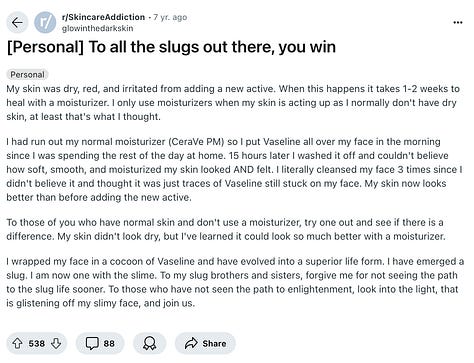
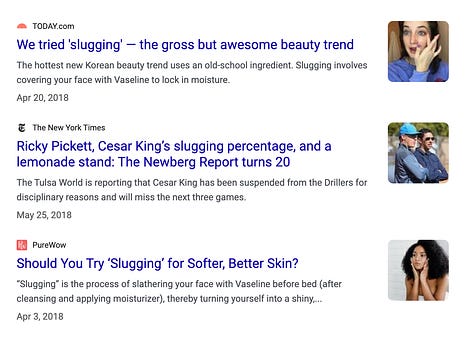

Slugging, if we’re going to go by the (web)pages of history, is slathering yourself in Aquaphor to combat dry skin. Aquaphor is an occlusive ointment, aka has lots of waxy, fatty oily substances that help slow down how fast water evaporates from your skin. This allows skin to be healthier, more elastic and less dehydrated. Aquaphor is unique from Vaseline in that it has many ingredients, not just “the one.” It’s made up of mineral oil, ceresin, lanolin alcohol, panthenol, glycerin and biabolol… but the true star is the greasy active ingredient, petrolatum. Petrolatum has been shown to help skin’s elasticity, hydration and ability to heal and is recognized by the FDA to be a skin protectant.
As someone who worked in women’s magazines and publishing from 2009-2016, the morality of Vaseline was often debated in the same whisper as “did you know it was Marilyn Monroe’s secret?” This debate, the undeniable effectiveness of lubing your skin up, opened the door to a myriad of “petroleum-free” ointments and occlusives.
A few things:
Slathering yourself in Vaseline is not new. It’s something many people do, have done, and as a kid my grandmother would slather me in NIVEA cold cream. Being a greasy child on a cold winter day is a right of passage in some households.
Dermatologists, I know y’all are rolling your eyes at “slugging” but it’s getting more people to moisturize!
Petrolatum was not invented by the founder of Vaseline. He was the first to patent and commercialize it, this practice comes from Native American's.
Petrolatum, a byproduct of fossil fuels, isn’t “worse for the environment” than plants.
Plants require industrial agriculture (leading to habitat destruction) use fertilizers that have nitrogen (fossil fuel derived).
Furthermore the cost to process, transport and clean plants… it’s just a reductive and misleading statement to say “petrolatum supports the fossil fuel industry” without the caveat that agriculture gives the fossil fuel industry a lot of $$$.
Petrolatum is, whether we like it or not, the gold standard in occlusives. It prevents 98% of transepidermal water loss.
This doesn’t mean you have to use it, just that as an ingredient, it’s well studied to work.
So, how should you slug? My recommendation is always to…
Go in with your serums (be careful if you use retinol as it can increase sensitivity).
Apply your moisturizer.
Apply your ointment or balm to SEAL IN the hydration.
Who should slug?
Going through menopause and not prone to breaking out? Slug.
Windy outside? Slug.
Dry skin? Slug.
Low humidity? Slug slug.
Like looking glowy? Slug my precious!
Don’t care about your bedding? SLUG.
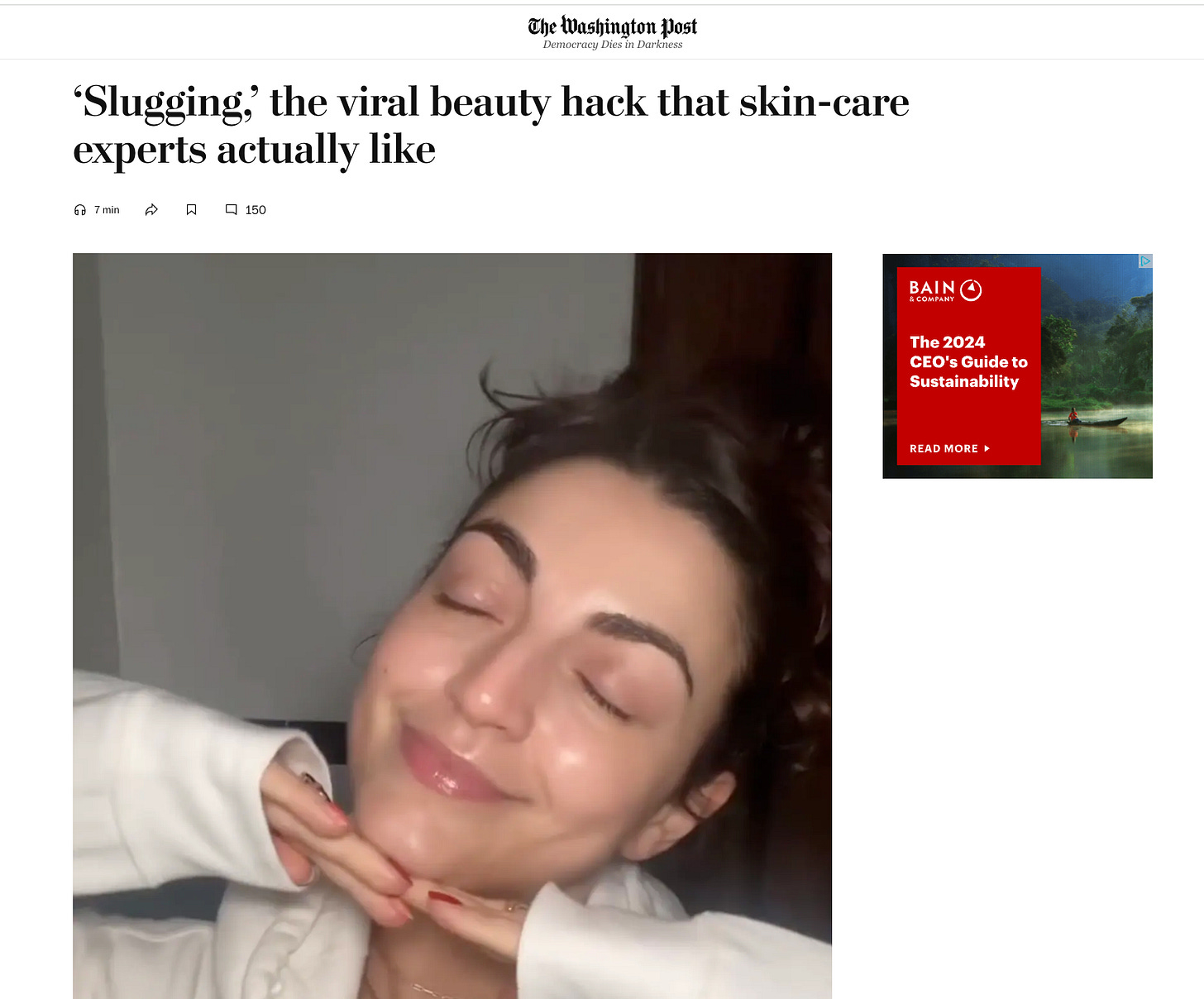
Over the weekend I’m going to work on the brands that have launched, the ingredients that we’re starting to see replace the gold standard, and brands that are doing interesting takes on a classic (not sorry, I am an unabashed fan of Experiment!).
If you also love coating yourself in a waxy, greasy substance, leave a comment or anything you want to know about the most important step in skincare; occlusion. Commenting is open to everyone!


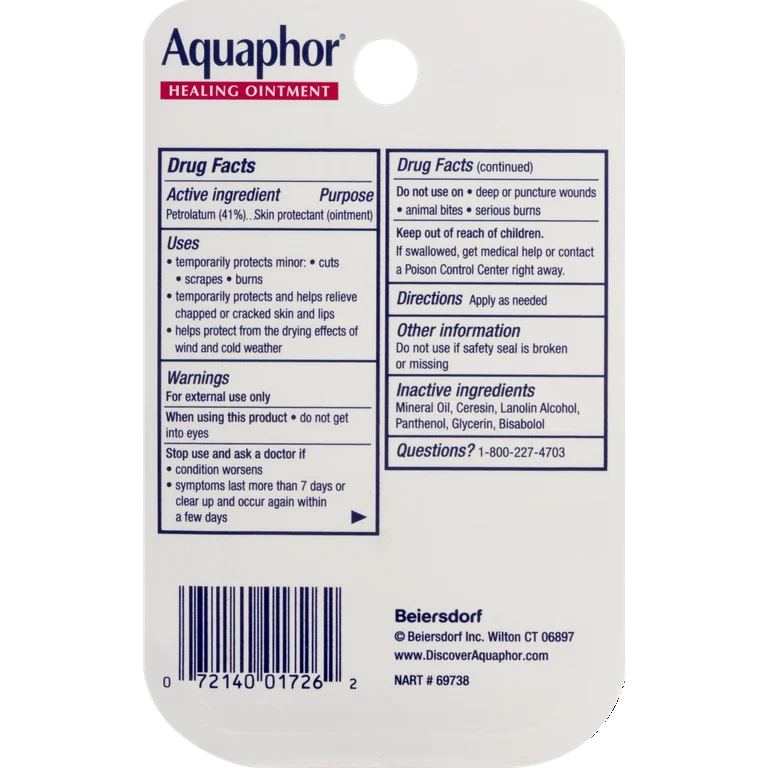
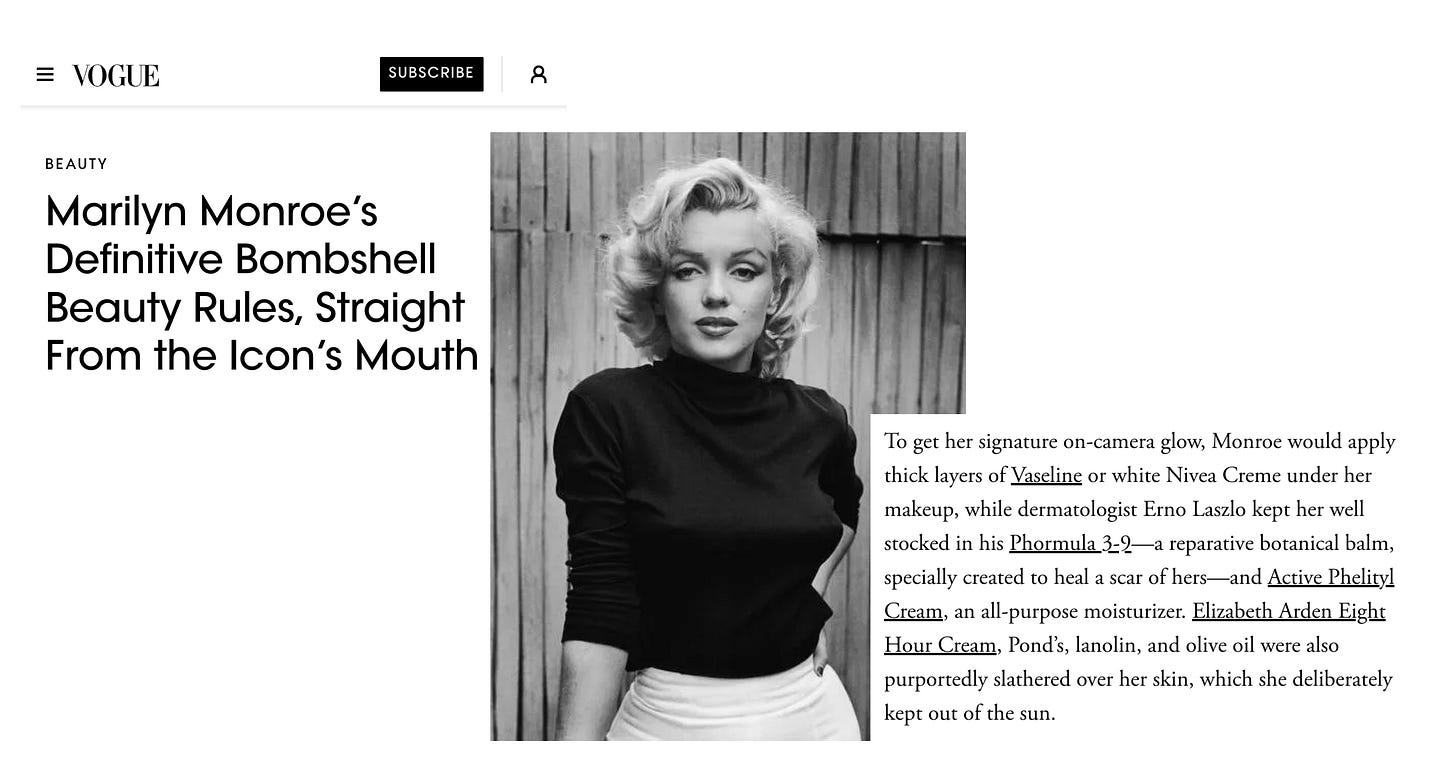
this is phenomenal - thank you! how long should we let our face do its thing before we can go to bed, i.e. have my inexpensive pillow cases rub the Aquafor away?
Is it safe to start slugging the day after microneedling? With deliverance and instant Angel under it